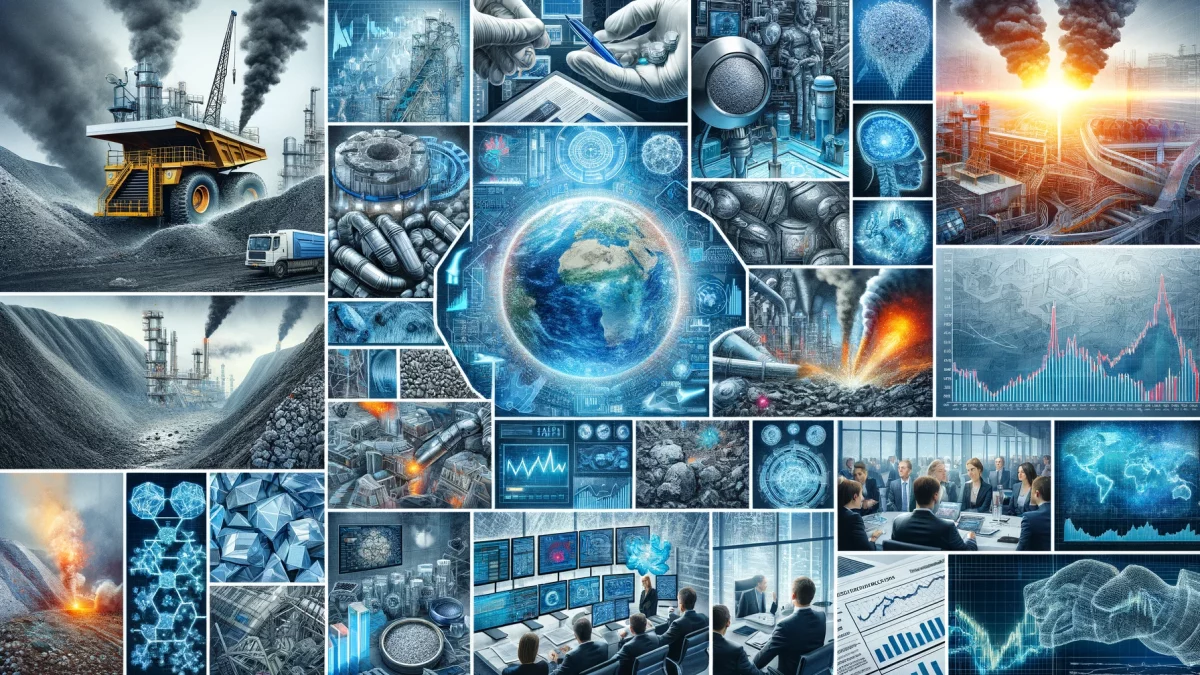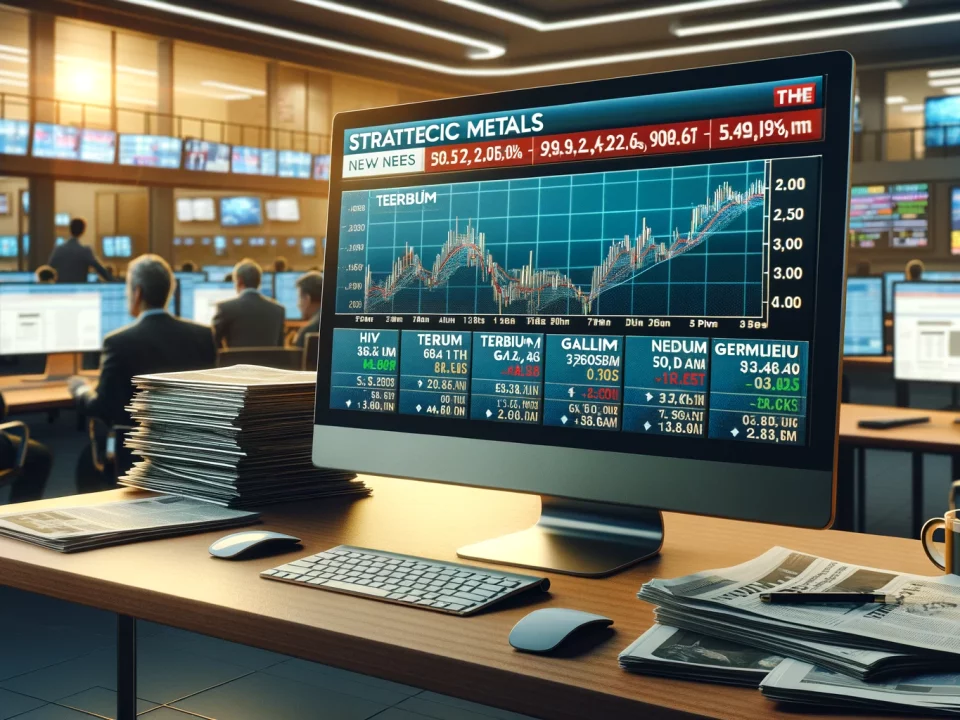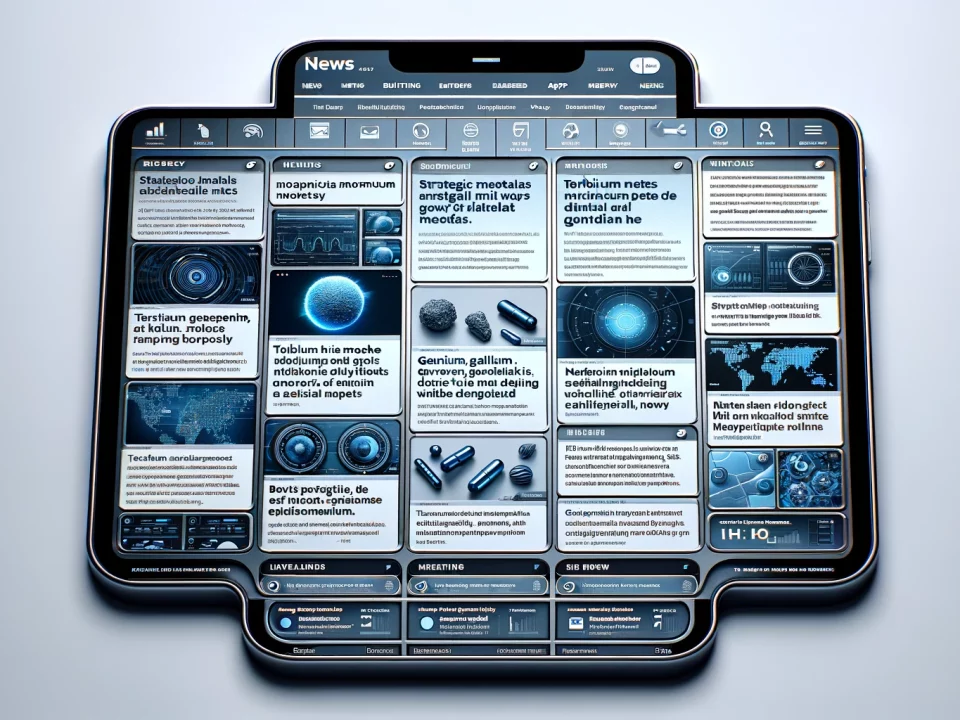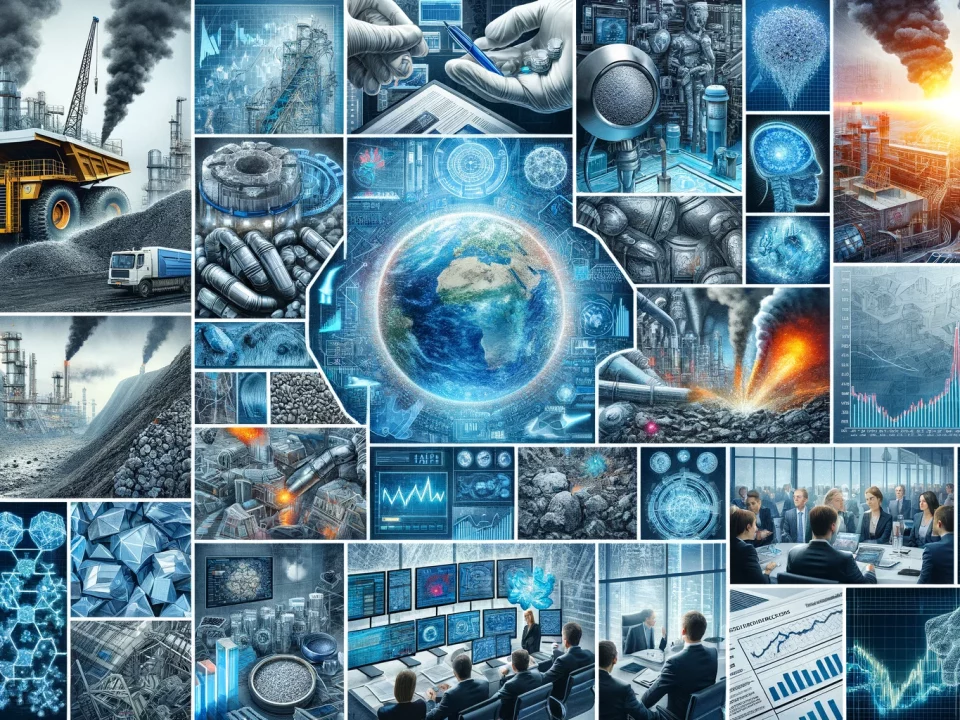
Weekly News Review November 11 – October 17 2024
November 17, 2024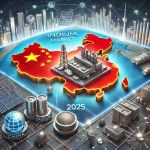
Indium Market Outlook 2025: Rising Prices, Geopolitical Shifts, and Future Potential
November 26, 2024China published the second batch of export data, including the amount of shipped gallium and germanium, this week, and Russian President Putin urged the development of the rare earth industry in the country. Meanwhile, the International Energy Agency published a new report on the critical mineral recycling status quo…..
….all the the details in our weekly roundup.
RUSSIA: PRESIDENT PUTIN CALLS FOR INVESTMENT IN RARE EARTHS –
Russia possesses large reserves of rare earths, but with a production of less than 3,000 tons, it plays a secondary role in this sector globally.
Plans were already published in the summer of 2020 to make the country the second-largest producer after China, which, with 240,000 tons, remains firmly in first place. Reuters reported that Moscow intended to invest $1.5 billion in the rare earths industry. However, the development of the key deposit, Tomtor, in the east of the country appears to be stalled, according to the Russian news agency Interfax.
President Vladimir Putin stated that the companies that acquired the deposit are not investing. However, the state needs this strategic resource, as Interfax quoted. Either investment would be made, or the owners would have to cooperate with other companies to advance Tomtor, which also contains large steel alloying element niobium reserves.
In November, the Russian newspaper Kommersant reported that the deposit might be administered by the state-owned holding company Rosneftegaz. Tomtor is located in the Sakha Republic, also known as Yakutia, which is rich in natural resources, from diamonds to oil, gold, and tin.
JAPAN AND SOUTH KOREA LOOK TO PERU TO BOLSTER STRATEGIC METALS SUPPLY CHAIN:
Peru is the world’s second-largest copper and zinc producer and third-largest silver miner.
Over the weekend, the Peruvian government signed agreements with South Korea and Japan to cooperate on critical mineral supply chains. On Saturday, on the sidelines of the Asia-Pacific Economic Cooperation Forum (APEC) leader meeting in the South American country, South Korean President Yoon Suk Yeol and Peruvian President Dina Boluarte signed multiple agreements to cooperate in critical minerals and the defense sector.
Following the APEC meeting, Shigeru Ishiba, Prime Minister of Japan, met with Boluarte on Sunday to discuss the two countries’ relations. In a joint statement, the two countries reaffirmed their strategic partnership. They adopted a road map under which they will further deepen economic, political, and people-to-people ties and ramp up cooperation in defense, science, renewable energy, and critical mineral sectors over the next decade.
Peru is increasingly being considered as countries around the globe seek to diversify supply chains of critical minerals away from industry leader China. According to data from the United States Geological Survey, South America is the world’s second-largest producer of copper and zinc and the third-largest silver miner.
In August, the United States signed an agreement to cooperate on critical minerals (we reported). However, the People’s Republic is also ramping up efforts to boost ties with Peru. On Friday, China opened a new deep-water port in Chancay, north of Lima, as the latest part of its Belt and Road Initiative. The port will be operated exclusively by Chinese shipping giant Cosco for 30 years, a detail the Peruvian government described as an “administrative error.” It sought to alter the terms earlier this year. However, a lawsuit was dropped in June before Boluarte visited the People’s Republic.
INTERNATIONAL ENERGY AGENCY: REPORT ANALYSES STRATEGIC METALS RECYCLING –
For the first time, the International Energy Agency (IEA) has released a report highlighting the current state of recycling critical raw materials vital for advancing the energy transition. These include copper, cobalt, and rare earth elements, which have become widely used due to their magnetic properties.
The report argues that establishing a circular economy could reduce but not entirely eliminate the need for more mining investments. It could mitigate the environmental and social impacts of overarching mineral extraction while strengthening supply security.
Regarding rare earth elements, the authors identify electric vehicle motors and wind turbine generators as the most accessible sources for recycling rare earth magnets. Compared to household e-waste, such as smartphones, the magnets in these large applications are more prominent and not housed in small, intricate casings, making them much easier to reclaim.
Beyond this finding, the report identifies new processes, automation, and artificial intelligence as areas that could offer additional opportunities in this field.
INDIA AND ITALY TO COOPERATE: STRATEGIC METALS ON THE AGENDA –
The leaders of India and Italy have agreed to deepen their economic and political ties further. During their fifth meeting in as many years, held on the sidelines of the G20 Summit in Rio de Janeiro, Giorgia Meloni, and Narendra Modi announced an action plan for this purpose. The Italy-India Joint Strategic Action Plan 2025-2029 outlines their joint strategy for the coming years.
A key focus of this cooperation is science and innovation, including exploring new methods for extracting and refining critical minerals. This effort will involve contributions from academia, industry, and startups in both countries.
India has been increasingly active internationally as a rising economic power, aiming to reduce its reliance on imported raw materials. The subcontinent is holding talks about investments in African and Latin American nations, among other regions (we reported). Partnerships with countries such as the United Kingdom and Italy are being sought.
Meanwhile, domestic mining is becoming a priority in Indian policy. For instance, the state-owned mining company Coal India is pursuing lithium extraction. India also plays a modest role in extracting rare earth elements, with a mine production of approximately 2,900 tons in 2023, according to data from the US Geological Survey. By comparison, China produced 240,000 tons last year.
UNITED KINGDOM: INDUSTRY CALLS FOR IMPROVED STRATEGIC METALS SUPPLY –
Industry and research representatives have urged the UK government to strengthen the supply of critical raw materials necessary for the energy transition. The country relies heavily on imports, leaving it vulnerable to potentially unstable supply chains. This concern was outlined in a letter signed by around 30 companies and organizations from the renewable energy and mining sectors. To mitigate these risks, the letter calls for advancing circular economy practices, recycling, and improving material efficiency.
The signatories also advocate for making access to responsibly sourced critical minerals a global priority and enhancing diplomatic efforts to ensure this. They warn that combating climate change in an increasingly unstable world with equitable access to these resources will be possible. The letter was prompted by the COP26 climate summit in Azerbaijan and the G20 meeting in Brazil, where the UK plans to champion the global energy transition.
Economic Opportunities Through a Circular Economy:
The think tank Green Alliance coordinated the initiative, highlighting the economic potential of a circular economy for critical raw materials. One example cited was recycled nickel from electric vehicle batteries, which could meet over 50% of the UK’s domestic demand by 2040.
The UK has taken steps toward greater raw material autonomy in recent years. This includes releasing its first national critical minerals strategy, emphasizing new resource partnerships, and revitalizing domestic mining. Recycling also plays a key role, with companies like Mkango Rare Earths UK and Ionic Technologies emerging as significant players, bolstered by partial government funding.
NEW TECHNOLOGIES: CHINESE AND US UNIVERSITIES WORKING TOGETHER –
International research team develops technology based on gallium and other metals.
Streaming, cloud storage, artificial intelligence – the global rise of digitalization is driving a growing demand for data centers. This also means a greater need for energy to operate and cool these facilities. According to a Goldman Sachs forecast, the energy consumption of data centers is expected to increase by 160 percent by 2030.
An innovation could significantly reduce this projected consumption and the associated greenhouse gas emissions. Researchers have developed a material based on aluminum nitride and Galinstan, a liquid alloy of gallium, indium, and tin at room temperature. This material dissipates heat from high-performance electronic devices far more effectively than previously known materials.
Cooling systems account for 40 percent of a data center’s energy consumption, but scientists suggest the new technology could cut cooling demands by 13 percent. This would reduce the need for complex cooling systems and potentially enhance computational performance thanks to improved heat dissipation.
Collaboration Between Chinese and US Universities Bridges Research Gap:
The study, published in Nature Nanotechnology, is part of a project on thermal interface materials, which aim to dissipate heat from electronic devices efficiently. The collaborative effort between Chinese and US universities bridged the gap between these materials’ theoretical potential and practical performance.
So far, the material has been tested on small-scale devices in the lab. The next step involves trials in data centers in collaboration with industry partners. Beyond data centers, the researchers see potential applications in other energy-intensive sectors, such as aerospace, where their invention could enhance efficiency and environmental sustainability.
CHINA: GALLIUM AND GERMANIUM EXPORTS DECLINE IN OCTOBER –
China exported significantly less gallium in October compared to September. According to data from the customs authority, exports plummeted from 6,070 kilograms to just 600 kilograms. The only recipient countries were Thailand and Slovakia. The decline in germanium was less pronounced, dropping by 352 kilograms to 1,779 kilograms.
The most significant portion of the technology metal was shipped to Belgium. Since summer 2023, export restrictions have been in place for both raw materials, with companies now requiring export licenses. Shortly after the new regulations were enacted, exports initially halted completely before gradually resuming from last October onwards.
UNITED STATES AND SOUTH KOREA TO COOPERATE ON INNOVATION AND THE CIRCULAR ECONOMY:
The US company ReElement Technologies and South Korea’s Posco aim to make supply chains for rare earth elements and the magnets produced from them less dependent on industry leader China. A memorandum of understanding (MOU) has been signed to establish a partnership focused on producing light and heavy rare earths for Posco’s magnet production. ReElement’s proprietary technology, which can process recycled materials and ores, will be used in this effort.
As reported earlier this year, Posco plans to supply automakers in North America and Europe with rare earth permanent magnets. The material processed by ReElement is expected to help fulfill contracts worth nearly $900 million. Additionally, ReElement plans to recycle production waste and decommissioned magnets, reintegrating them into Posco’s manufacturing processes and advancing the circular economy. According to ReElement, its patented technology utilizes resins instead of traditional solvent-based processes for rare earth processing, which reduces investment costs, space requirements, and environmental impact.



